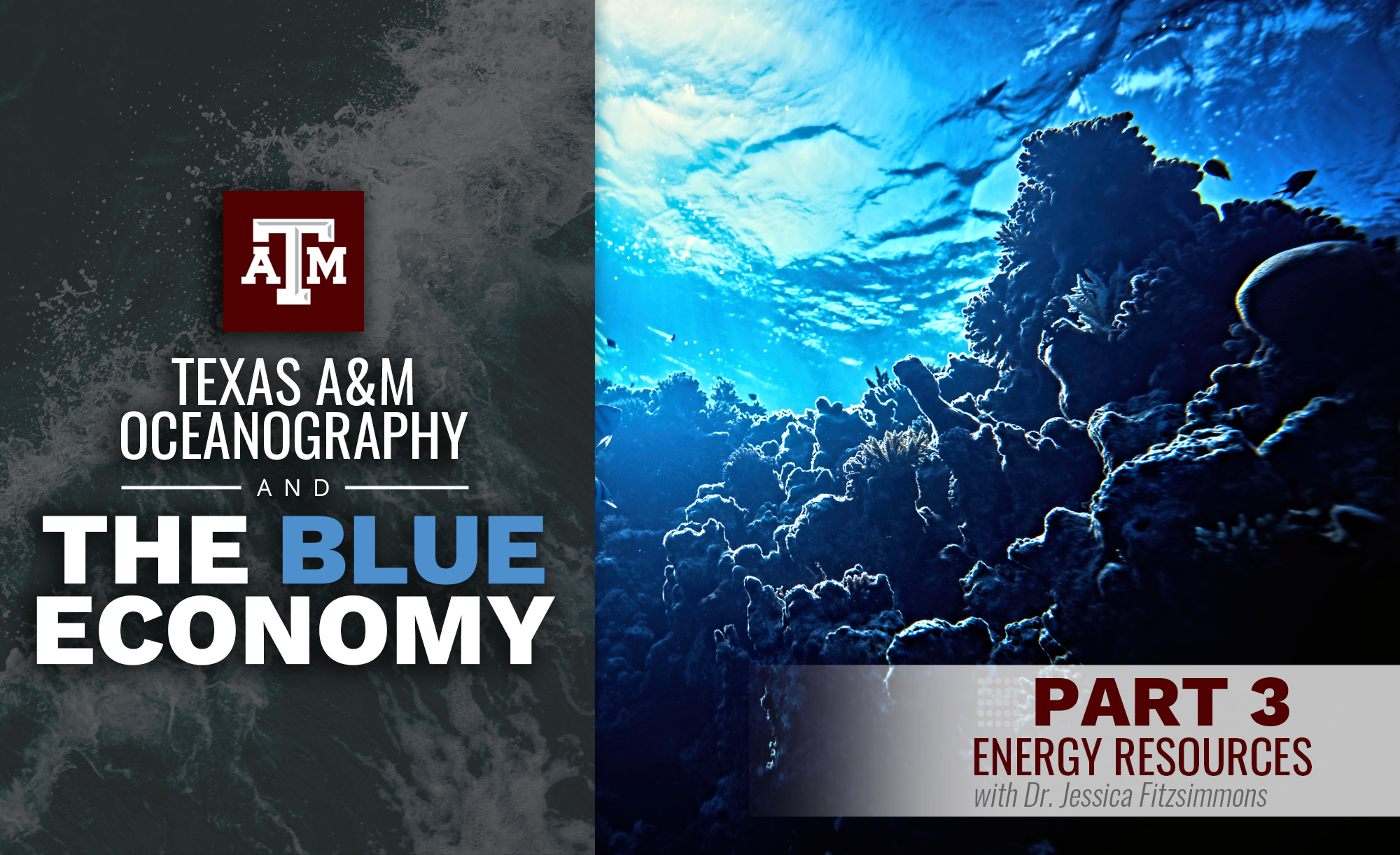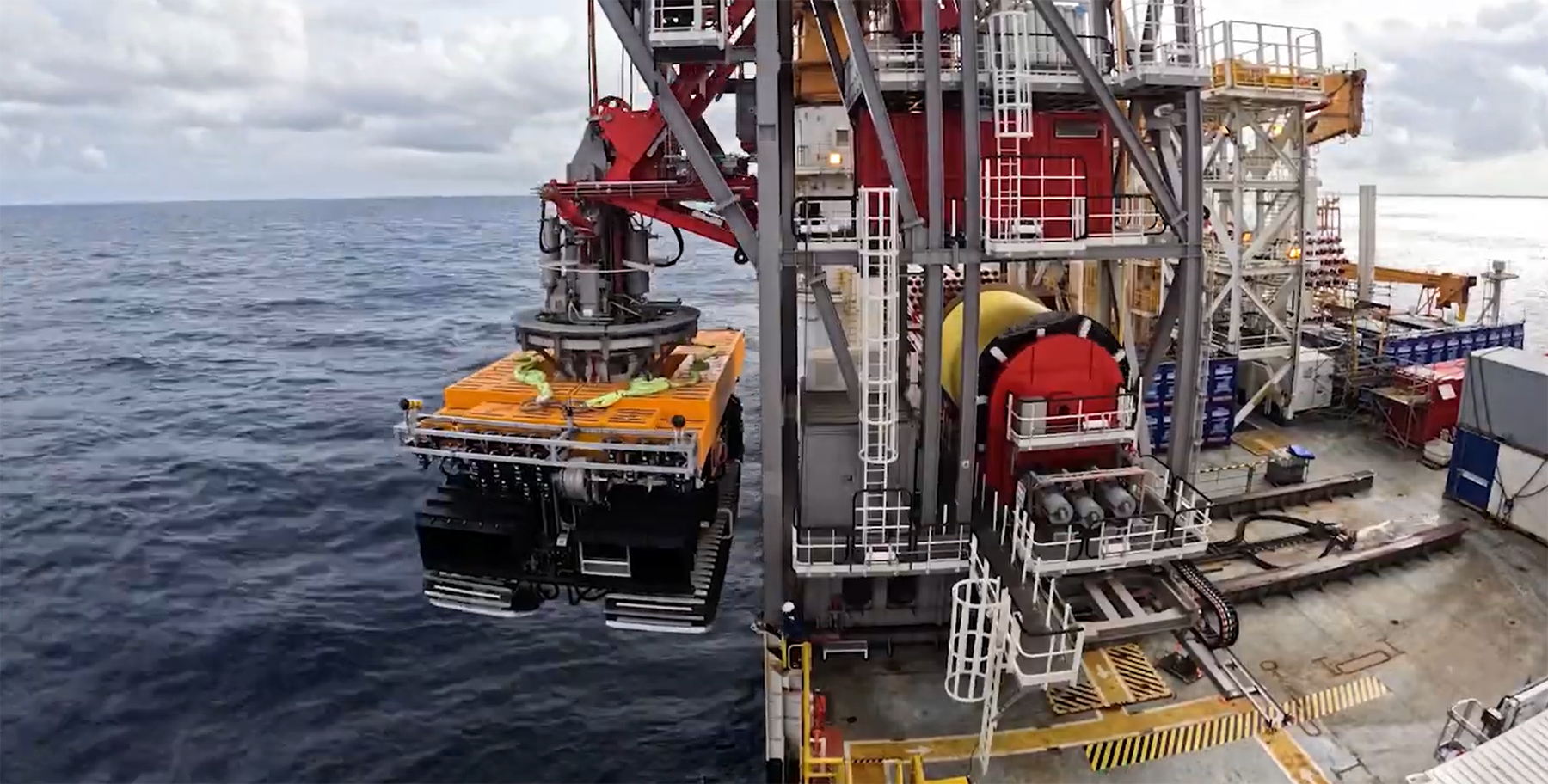
Texas A&M Oceanography & the Blue Economy
|
Welcome to Texas A&M University Oceanography and the Blue Economy — a three-part series diving into the forward-thinking work of Aggie scientists who are charting the course for a smarter, more sustainable ocean future. From harnessing the power of the sea to protecting our coasts and conserving vital ecosystems, Texas A&M’s Department of Oceanography is helping lead a new wave of innovation, education and discovery. As one of the nation’s only land-, sea- and space-grant institutions, our researchers are not just studying the ocean — they’re shaping its future.
So, what is the Blue Economy? A simple definition is using ocean science to build jobs, protect the environment and support the many ways people and industries rely on a healthy ocean. This three-part series highlights how Aggie researchers in the Department of Oceanography at Texas A&M University are fueling the Blue Economy through science that drives real-world impact. Part 3 focuses on energy resources with Dr. Jessica Fitzsimmons, associate professor in the Oceanography Department. Her research studies how trace metals cycle through the ocean and affect the global carbon cycle and climate—important for sustainable ocean energy. She leads ocean expeditions, mentors a large suite of graduate and undergraduate students, and oversees advanced lab facilities. Her work is internationally recognized and shapes the future of ocean science and energy innovation.
Q: The Blue Economy focuses on using ocean resources for economic growth while protecting marine ecosystems. How does deep-sea mining for energy resources impact this balance?
A: Deep-sea mining means extracting mineral deposits from the seafloor. These minerals are important because they contain metals we need for the green energy transition—like the magnets in wind turbines and the metals in electric vehicle batteries and solar panels. But seafloor mining hasn’t started yet, mainly because the United Nations International Seabed Authority is still working out the financial and environmental rules companies must follow. There are many environmental risks we should first understand better—such as how mining equipment could destroy seafloor communities, release toxic metals and particles into the water that harm marine life and change nutrients in the ocean that affect fisheries. We need a lot more research before we can say whether the benefits of deep-sea mining outweigh the potential environmental costs.
Q: What research at Texas A&M is focused on the environmental risks of extracting energy resources from the ocean?
A: In 2020, I started a research contract with The Metals Company, a Canadian deep-sea mining firm, to study how extracting polymetallic nodules affects the chemistry of the water column. We focus on the NORI-D mining lease area in the Clarion-Clipperton Zone of the Pacific Ocean, between Hawaii and Mexico, in about 4,200 meters of water. Mining creates two plumes of particles: one near the seafloor caused by the mining vehicle, and another midwater plume created when leftover sediments are discharged back into the ocean after the large nodules are filtered out. My work aims to measure changes in nutrients, toxins and tracer chemicals in these plumes before and after mining trials to understand how local and downstream ecosystems might be affected.

Q: How are Texas A&M students involved in studying the effects of deep-sea mining on marine ecosystems?
A: Ph.D. student Shelby Gunnells leads much of this research, both at sea and in the lab, along with other current and former students and staff. We’ve been on three major expeditions to the NORI-D site: two baseline sampling trips in 2021 to establish chemical conditions before mining, and a longer expedition in 2022 during The Metals Company’s pilot mining trials—the first successful extraction and processing of nodules from the seafloor using modern technology. Former students and staff have played key roles on each expedition, and undergraduate students have helped with chemical analyses back in the lab. It’s been a great team effort that’s providing critical data on the impacts of deep-sea mining.
Q: What resources from deep-sea mining are most needed for energy production, and why is there growing interest in extracting them?
A: Deep-sea mining targets three main types of mineral deposits: polymetallic nodules, ferromanganese crusts, and seafloor massive sulfides near hydrothermal vents. Polymetallic nodules, which look like potato-shaped rocks on the deep ocean floor, are the most likely to be mined soon and are the target of The Metals Company’s efforts. They contain metals like cobalt, nickel, copper and manganese, all essential for green technologies, especially for the manufacture of electrical vehicle (EV) batteries. Interest in mining the seafloor has grown recently because demand for these metals has risen with the green energy push, and during the past two decades, new deep-sea exploration technology has made mining more feasible. There’s also concern about relying on land-based sources from countries with unethical mining or geopolitical risks, so ocean sources are seen as an underexplored alternative.
Q: Is there any new technology or scientific approach that could help reduce the environmental impact of ocean energy extraction?
A: Different companies use different mining methods, each with their own risks. For example, Impossible Metals plans to use artificial intelligence to identify and collect only nodules without visible life, lifting them into autonomous vehicles above the seafloor. This approach could eliminate one of the plumes entirely, reduce disturbance to the seafloor, and avoid harming organisms. But this technology has not been tested at the depth of our study area. Another key question is whether emerging green-energy technologies will continue to rely on metals found in the deep sea. For instance, if electronic vehicle manufacturers move away from cobalt-rich batteries in favor of alternatives like lithium-iron-phosphate, the demand for cobalt could decline, reducing the need for deep-sea mining. It would be unfortunate to harm fragile deep-sea ecosystems for a resource that may soon become obsolete. These technological shifts will heavily influence whether deep-sea mining is justifiable from both environmental and economic perspectives.

